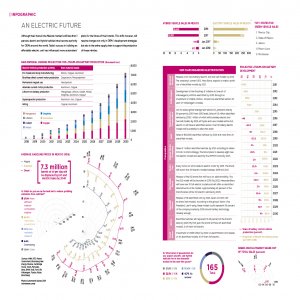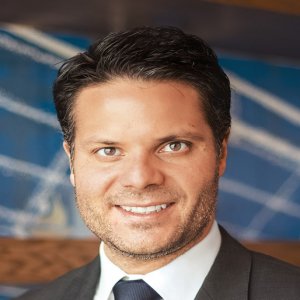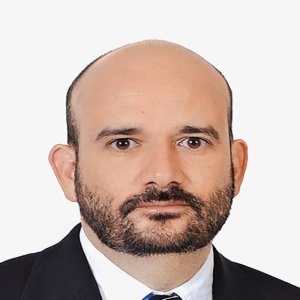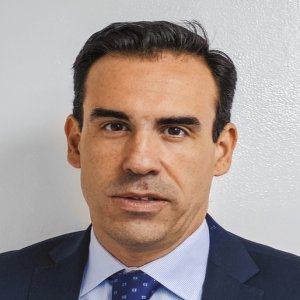Tackling Financial Challenges in the Informal Sector

STORY INLINE POST
Q: How did ProCrédito become a fully Mexican-owned SOFOM?
A: ProCrédito was founded as ProCredit México. It was a subsidiary of Germany’s ProCredit Holding in 2006, but at the beginning of 2016 it was sold to a group of Mexican executives who also acquired the unit’s credit technology and all its staff and subsidiaries. Although we are still associated with Germany in the systems, technology and training areas, this is no longer true for the economic sphere. We changed our name to ProCrédito in 2018 as part of this process.
ProCrédito provides loans to people engaged in business activities or to small enterprises. For instance, two years ago, the company lent a client money to buy his second urban bus. Last year, we extended more funds so he could acquire his third bus and he is now asking for credit to buy two more.
We started by offering microcredits to the informal economy. In 2010, our parent company ProCredit Group raised the level of available credit to our clients in East Europe, South America and Mexico from around US$2,000-US$3,000 to between US$10,000 and US$50,000. When ProCredit Holding divested from ProCredit México and we took over, the company already had a model for micro and SMEs with a credit range between US$10,000 and US$400,000.
Q: What advantages does ProCrédito technology deliver?
A: Our technology is focused on the informal and semiformal markets. We analyze each client individually, looking at their activities and how those are conducted. We also ask for proof of income and expenditures. Combining our methodology with computer software, we then make an evaluation and in two days prepare the loan and release it. This technology is similar to that used for corporate credit, only on a smaller scale. It involves a tool that enables us to make decisions based on data provided by our clients, which is not found in an audited financial statement. Financial statements are usually internal and fiscal information often differs from reality, so we have to balance this data.
Q: Why did ProCrédito decide to establish in central Mexico and the Bajio region?
A: We believe the area enjoys stable growth compared with the country’s northern and southern regions that either are not growing or that grow rapidly only to collapse when a crisis occurs. ProCrédito also decided to focus on this region because of the automotive facilities being built there. Many of ProCrédito’s clients are Tier 3 suppliers. They have lathes or tooling equipment and provide machining to the suppliers of large Japanese, US or German assembly plants. Some clients offer cleaning or personnel transportation services directly to automotive plants. Our subsidiaries in Aguascalientes, Leon, Queretaro and San Juan del Rio work mostly with the automotive industry.
Q: What is ProCrédito’s main strategy for supporting SMEs?
A: Our priority is flexibility. Our model prevents clients from getting too indebted and enables us to lend them money according to their needs and business cycles. For example, a client in tourism-oriented transportation may require a payment scheme wherein they pay more during peak seasons and less during low seasons. ProCrédito is also flexible regarding the duration of loans. We may offer a loan due in four or five years and often clients will pay it off before the deadline because we do not charge for advance payments. Transport companies account for 53 percent of ProCrédito’s clients, with a variety of businesses making up the rest. Clients that produce or offer services to the automotive industry account for about 10 percent of ProCrédito’s client portfolio.
To prevent clients from becoming too indebted, ProCrédito analyzes credit needs and payment capabilities. We do not lend more money than necessary, even if the client’s payment capabilities are greater. ProCrédito also periodically checks with several credit bureaus to see if our clients have increased their debt with other institutions. We monitor our customers with risk evaluations run by our credit risk department once or twice a year. Procrédito remains close to its customers on a monthly basis when a loan is issued and does a credit monitoring assessment to ensure they can fulfill their duties upon maturation of their debt.
Q: How would you define ProCrédito’s ideal client and how do you attract these players?
A: We look for businesses that have been operating for a couple of years at least. Most of what we do is financing growth, either through working capital or asset acquisition. Our loans range between MX$200,000 (US$10,000) and MX$6 million (US$300,000) for entrepreneurs who lack access to the banking system, either because they have no previous banking experience or because the quality of their financial information does not comply with banks’ requirements.
Q: What are the main challenges associated with offering credit to the informal sector and how has ProCrédito faced them?
A: Even though ProCrédito has a small past-due portfolio, approximately 20 percent of our clients fail to pay on their due date and do so a few days down the line. This market segment usually pays but not on time. We have to find ways to manage this better.
We have many good practices from ProCredit Holdings in Germany, including our credit analysis methodology, procedures, IT systems and institutionalism. Our main challenge is adapting these practices to Mexico’s informality, economic cycles and credit culture. To achieve this goal, ProCrédito tries to be empathetic with its customers and their needs and to remain flexible in terms of payments and economic cycles.
Q: What are ProCrédito’s growth priorities in Mexico for 2018?
A: We want to continue growing in the center of the country and in the Bajio region and to open subsidiaries in Mexico City, the State of Mexico, San Luis Potosi and Monterrey. We are also discussing with an assembly plant the possibility of becoming this company’s financial institution oriented to the informal market. Part of our midterm strategy focuses on building alliances with automotive companies and distributors that have 15-30 dealerships.
Since acquiring ProCredit México, we have increased the company’s loan portfolio by about 25 percent and doubled its capacity to offer new loans. ProCrédito issues many loans per month and its clients often pay them before they are due thanks to their positive cash flow. We expect to achieve a 48 percent growth rate in our balance sheet in 2018 by focusing on the automotive market and either financing vehicles and trucks or Tier 3 suppliers. We also plan to further diversify into the service and production entrepreneur segments among SMEs.
























